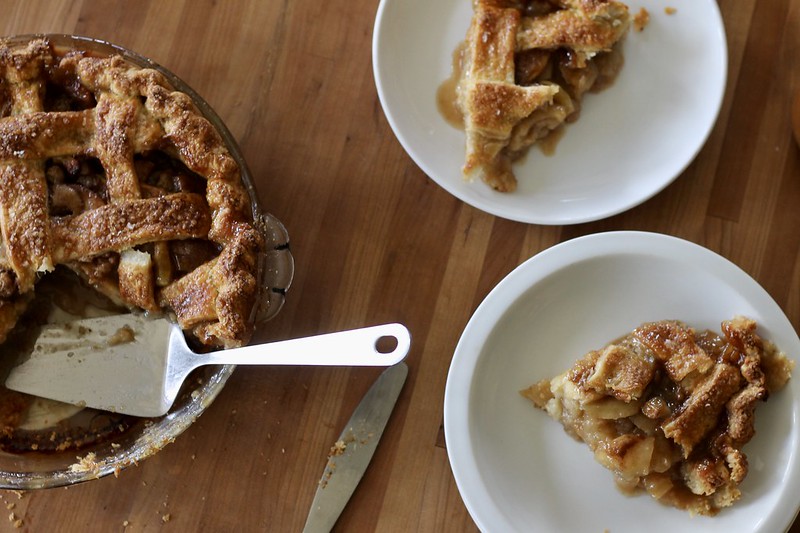When I first happened upon Jen on Facebook, I immediately developed a fangirl crush. She’s salty, whip-smart, and really, really funny. That she homeschooled, too, was just icing on the cake. When I decided to do this series, she was one of the first people I approached, and, fortunately for all of us, she said yes!

Hello, Jen! Tell us about your family!
My husband David and I have two kids. Verona (10) is super social and loves writing and fashion designing when she’s not being the maker of jokes and life of the party. Finnegan (9) loves video games (specifically programming and designing them) and architecture. David is an engineer in the tech industry, doing all the fancy stuff with big words that boils down to “he’s part of the reason computers and phones and anything with a microchip works,” and I have a handful of small internet business I can do from the computer.
Why did you decide to homeschool?
We started talking about homeschooling when Verona was still a baby, mostly because we’d both had decent experiences in school but were very aware that, educationally speaking, it was definitely not set up for us and even if we enjoyed it we would have benefited a lot more from a wildly different educational system. We wanted that for our kids.
Wait. What do you mean by “it [school] was definitely not set up for us”?
Both of us (David and I) are smart but neither of us fell into the traditional learning styles or educational time frame that most schools use. For example, I was gifted in a lot of ways in elementary school and a very very “late” reader. I think that an environment that encourages the growth of things you’re really good at, while slowly working on the things you’re not, is a much more efficient way of educating. One can “do well in school” (for the most part, we both breezed through high school, bored) without those hours spent in a chair in a classroom actually being all that beneficial.
So how old were you when you learned to read?
About 10. I went to an amazing school full of amazing teachers who had the freedom to use a lot of out-of-the-box kinds of methods and one-on-one instruction and all that, but my brain just wasn’t ready. Until the summer between two of the grades, when it just clicked. By fifth or sixth grade I was at an upper high school reading level.
Some of our brains are too busy doing other things for a bit, so we gotta wait til there’s an open space to put something new, like reading. 🙂
So as you were saying: you were thinking about homeschooling….
Yes, and the older the kids got (read: the closer they got to going to school) it became obvious how ridiculous it would be to stop all the amazing learning that was already happening so they could go sit in a desk and do worksheets. Verona was already reading by then, and it made my eyes roll knowing how that would affect her in an overcrowded and understaffed classroom, especially where test scores are paramount and kids who are “ahead” often get ignored in favor of getting everyone else up to par. I used to joke that we couldn’t send them to school because it would take away from all their time to learn.

How do they learn?
Usually we have a few books going and topics that people are interested in, so in the mornings when everyone gets up and about (10ish usually, we’re not early risers), I’ll make breakfast and then while we eat, we’ll read and talk and do whatever other “schooly” stuff I had planned. Usually this means we listen to a piece of music and discuss it, and sometimes we’ll read a short passage, or work on a poem we’re memorizing. I’ll read aloud while everyone eats, and then once breakfast is over, we’ll do anything from busting out the art stuff to Minecraft projects to more reading to watching an (at least moderately) educational something… whatever.
Afternoons are kept open for anything we’re doing out in the world. One day a week we participate in a small, child-led co-op. One day we have a standing date for coffee with some really awesome old ladies who tell great stories and have wisdom I can only dream of. Other days we meet friends at the park or go to a museum, or maybe somebody has a class that they wanted to do, or someone wants to go down to the river to explore or fish.
On days that we don’t have anything else planned, Finn’s favorite favorite thing is going to one of the coffee shops or brunch places right by our house with card or board games and hang out all afternoon playing together. We all get drinks and share a big plate of fries. The waitress is so used to seeing us in there she worries about us if we’re gone for a week or two.

As the kids have gotten older, how has homeschooling changed?
The only thing that has changed is the amount of things the kids plan on their own. When they were younger there was lots of me saying, “Here’s a couple things we can do today, what sounds wonderful?” and as they’ve gotten older there’s a lot more of them being like, “Ok, today I want to finish working on X, Y, and maybe learn something about Z” and me just helping them find resources and being around in case they need help.

Is it hard to balance your own interests with those of your children?
I haven’t found that to be too difficult, mostly because we’re so relaxed in our homeschooling — we just all work with each other to get what we all need to get done, done. I also am a pretty big extrovert and thrive off the 100,000,000 “but why?”s of children, so once they got past being really little, I didn’t ever really have to deal with getting enough “alone time” like a lot of moms talk about.
So what are the challenges?
I think one of the major challenges is just the fact that we’re doing something new, we’re doing something different. There’s always risk with that. If kids in school graduate without knowing certain things, nobody bats an eye, but if a homeschooled kid can’t answer a relative’s unasked-for pop quiz at Thanksgiving dinner, suddenly people get very concerned about “the kind of education they’re getting.” Especially when you’re further on the unschooling or eclectic side, it feels really hard to talk to people about what we do because in order for them to even begin to understand, I feel like I need to completely reframe the entire way they think about family, education, the way the brain works, etc.

What have you learned from homeschooling?
Homeschooling completely reframed the way I thought about my own education. I used to think I’d be in college forever, just because I liked learning. But now I’ve figured out how to do that without college. Really digging into how people learn, and understanding that college isn’t always necessary (though it is sometimes helpful), has given me the tools and courage to attack my own education in new and amazing ways, even when my schedule/life/financial situation made it impossible for me to be taking any actual college classes. As a result, I no longer feel the need to formally take classes in order to feel like I’m learning.
Homeschooling has also totally changed the way I view children and how they learn. We were part of a distance learning charter for a while: they let us homeschool however we wanted, and they gave us funds for books, supplies, and classes, but one of the catches was that the kids had to do some regular testing to make sure they were “on target.” Once I started seeing how my children were scoring at the same level as their publicly schooled peers even though they’d never had a formal math lesson in their entire lives, I realized how much of children’s learning is in spite of school. Not because of it.

Where do you get your support?
I am lucky to live in a city (Portland, Oregon) with lots of very relaxed homeschoolers and unschoolers (and all the activities that go along with that). Being able to get together frequently with so many other relaxed home — or un — schoolers has given me a ton of support and inspiration for the kinds of things we do, and is a wonderful blessing for the kids.
What are Oregon’s requirements for homeschoolers?
You have to register and test a handful of times over the course of the kids’ childhoods. I don’t have to have anything approved or have someone looking over my curriculum or anything. Just, a handful of tests across grade school.
Any good resources to share?
I use several blogs and a lot of pinterest to find ideas, and I draw a lot of book ideas from the Wildwood Curriculum, which is a secular Charlotte Mason curriculum that’s available for free online.

Do you have a homeschool philosophy?
Our homeschooling philosophy is that wonderful and engaging time together does a lot more for education than things like worksheets. We’re very unschooly, but the unschooling world can get weirdly cliquey so I usually describe us as eclectic instead, and with a healthy dose of Charlotte Mason because that has worked well for our family and everyone has loved it, and a lot of Gameschooling.
My philosophy has evolved as I realized more and more than even “have no rules” is sometimes a rule, and we can do what best works for us without worrying that it’s enough this, that, or the other thing for anyone else. We’re never going to be schooly enough for a lot of people, we’re never going to be unschooly enough for hardcore purists, and that’s fine. We don’t need to be.

Any advice for people who might be considering homeschooling?
Make sure you don’t skip the deschooling process. Even if you plan to move towards a more structured schooling setup, you, as the parent, probably need that deschooling time more than your kid does, just to unlearn and relearn how learning happens. That, and don’t feel a need to keep up with public schools. Until they start showing real evidence that they’re doing it right, they don’t need to be your measuring stick.
I said what I said.
Thank you so much, Jen! It’s a treat to have this little peep into your world!
This same time, years previous: the quotidian (11.25.19), apple crumb pie, in my kitchen: 7:35 a.m., the quotidian (11.25.13), a Thanksgiving walk, steel-cut oatmeal.














